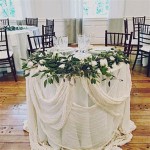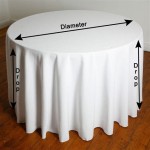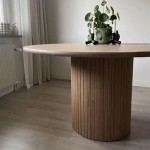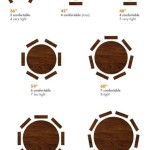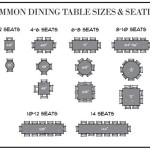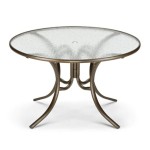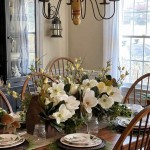```html
The Art and Function of Table Setting
Table setting, the practice of arranging tableware – including dishes, cutlery, glassware, and linens – for a meal, is more than just placing items on a surface. It is a fundamental element of dining etiquette, reflecting both cultural norms and the level of formality desired for a particular occasion. A well-executed table setting enhances the dining experience, communicates expectations to guests, and demonstrates attention to detail and hospitality. It is an art form that blends practicality with aesthetics, contributing significantly to the overall ambiance of a meal.
The history of table setting is intertwined with the evolution of dining customs. From simple arrangements in ancient times, where communal eating was the norm, to the elaborate and highly stylized settings of formal European dining, the way a table is set has reflected societal values and technological advancements. The introduction of individual plates, specialized cutlery for different courses, and sophisticated glassware signifies a shift towards individualization and refined dining practices. Different cultures across the globe possess unique table setting traditions, reflecting the richness and diversity of culinary practices.
Key Point 1: Understanding the Basic Table Setting
The fundamental components of a place setting are consistent across most Western cultures, especially within the context of informal and casual dining. The plate serves as the central anchor of the setting. Forks are typically placed to the left of the plate, with the dinner fork closest to the plate and other forks (salad fork, fish fork) positioned outward, depending on the anticipated courses. Knives are placed to the right of the plate, with the cutting edge always facing the plate. Spoons are positioned to the right of the knives. The water glass is usually placed above the knife, and other glasses, such as wine glasses, are arranged to its right, according to size and anticipated use. A napkin can be placed to the left of the forks, under the forks, or on the plate.
The arrangement of these elements is not arbitrary. It follows a logical sequence based on the order in which courses are served. Guests utilize the outermost utensils first, working their way inward towards the plate as the meal progresses. This pre-determined sequence eliminates confusion and promotes a smooth and elegant dining experience. A basic understanding of this sequential arrangement is crucial for creating a functional and well-organized table setting, even for less formal occasions.
Beyond the core elements, additional items may be included in a basic table setting depending on the intended menu. A bread plate, for instance, is typically placed to the upper left of the dinner plate, with a butter knife placed horizontally across it. Soup bowls are placed on top of the dinner plate when soup is served as a preliminary course. Understanding when and where to incorporate these additional elements is key to adapting the basic table setting to suit the specific needs of the meal.
Key Point 2: Formal Table Setting and Etiquette
Formal table settings represent a more elaborate and structured approach to dining. They are characterized by a greater number of utensils and glassware, reflecting a multi-course meal served with specific wines. The arrangement is meticulously planned, adhering to strict rules of etiquette and presentation.
In a formal setting, multiple forks may be present to accommodate different courses, such as salad, fish, and the main entrée. Similarly, several knives may be included, such as a dinner knife, a fish knife, and a butter knife. Spoons might include a soup spoon, a dessert spoon, and possibly a coffee or tea spoon. Each utensil is specifically designed for its intended purpose and is placed in the order of its anticipated use. The positioning of each item is precise, ensuring both functionality and visual harmony.
Glassware in a formal setting is similarly diverse. A water goblet is always present, along with glasses for different wines, such as red wine, white wine, and possibly champagne. The glasses are arranged in order of size and usage, typically from left to right. The specific types of glasses used will depend on the wines being served with the meal. Napkins are often folded elaborately and placed elegantly on the plate or to the left of the forks.
Beyond the physical arrangement, formal table setting also encompasses specific rules of etiquette. Guests are expected to use the utensils in the correct order, starting with the outermost utensil and working inward. They are also expected to handle the glassware and napkins appropriately. Adherence to these rules of etiquette demonstrates respect for the host and contributes to the overall sophistication of the dining experience. Mastering formal table setting and its accompanying etiquette is essential for those who frequently attend or host formal dinners.
Key Point 3: Adapting Table Settings to Different Occasions
While understanding the basic and formal table settings is crucial, the ability to adapt these principles to different occasions and settings is equally important. The level of formality and the specific requirements of the meal should dictate the complexity and style of the table setting.
For a casual brunch or lunch, a simplified table setting is appropriate. A single fork, knife, and spoon, along with a water glass and a napkin, may be sufficient. The focus is on functionality and ease of use, rather than strict adherence to formal rules. The choice of tableware can also reflect the casual nature of the occasion, with the use of less formal dishes and linens.
For themed dinners or holidays, the table setting can be adapted to reflect the specific theme or occasion. Color schemes, decorations, and even the choice of tableware can be coordinated to create a festive and immersive dining experience. For example, a Thanksgiving dinner might feature autumnal colors, decorative gourds, and special serving dishes for the traditional holiday foods. A Christmas dinner might incorporate red and green accents, festive linens, and candles to create a warm and inviting atmosphere.
Outdoor dining also requires a different approach to table setting. Durable and weather-resistant tableware is essential, along with tablecloths or placemats that can withstand the elements. Consideration should be given to preventing items from blowing away in the wind, such as using heavier napkins or securing tablecloths with clips. The overall ambiance should be relaxed and informal, reflecting the outdoor setting.
Ultimately, effective table setting is about creating a welcoming and functional environment for dining. By understanding the principles of basic and formal table settings, and by adapting these principles to suit different occasions, individuals can enhance the dining experience for themselves and their guests.
```
20 40 60 Etiquette Setting The Table Tone For Your Dinner Party

5 Table Setting Ideas For Everyday Use Doğtaş

Table Manners

Table Setting And Utensil Use For A Formal Dinner Crystalview

Which Fork Do I Use Leehenry Events Llc Nashville Event And Wedding Planner

Making Sense Of Business Dinner Table Settings Dummies

How To Set A Beautiful Formal Table It S Easy Mantel And

How To Set A Table With Napkins Your Guide Beautiful

4 Tips To The Perfect Everyday Table Setting Diane Gottsman Etiquette Expert

A Simple And Beautiful Holiday Table Setting Sanctuary Home Decor
Related Posts

